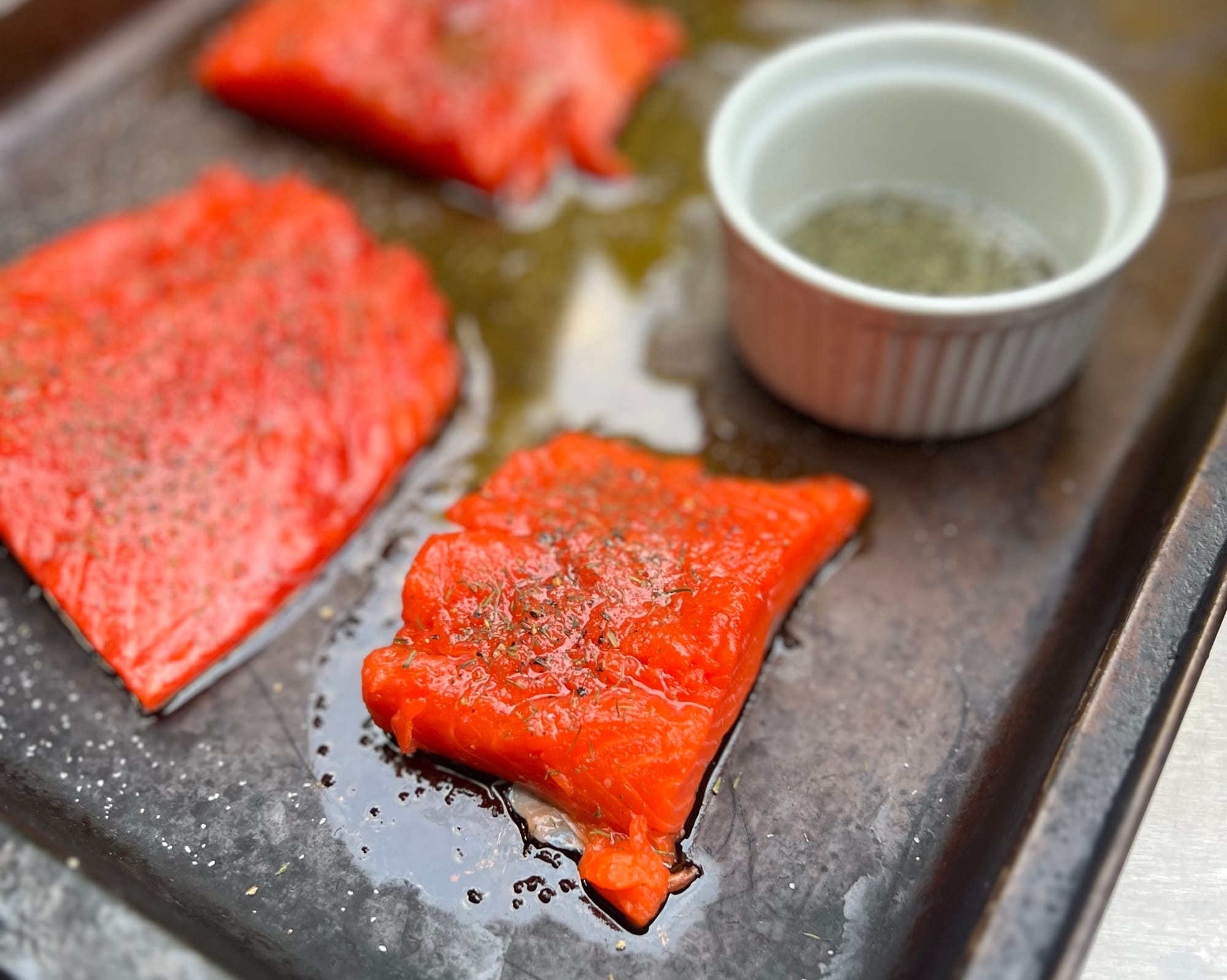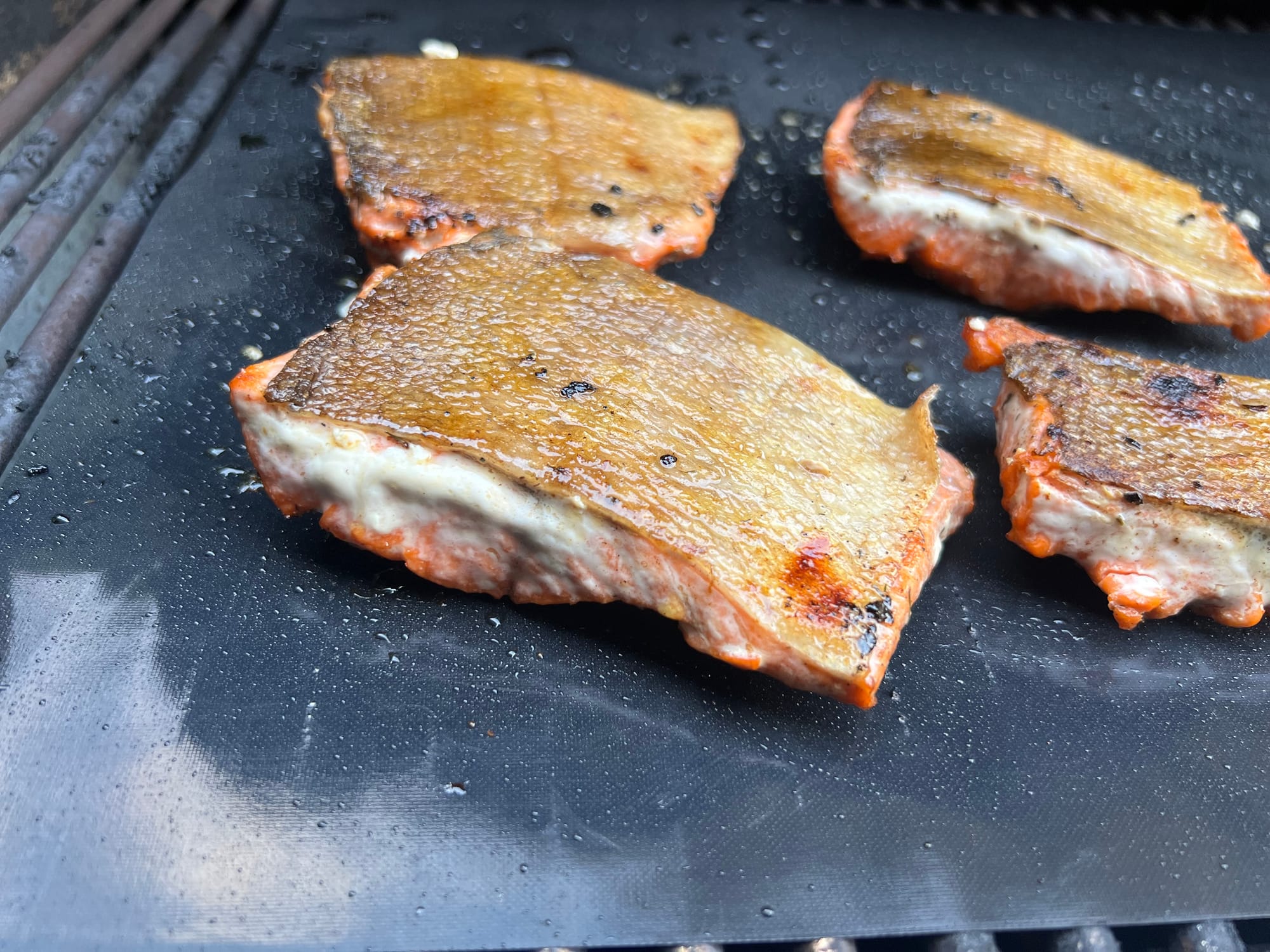The Eaten Path: Fresh sockeye is a rare scarlet culinary treat for Lower Mainland food lovers
Whether you catch a few for yourself or buy one from First Nations or commercially, treat this fish with respect and simplicity
The banks are lined, the boats are floating, the totes are full: it’s sockeye season in the Fraser Valley.
As someone who does not fish recreationally, these moments once every few years when the best eating fish in the world (in my humble opinion) are abundant in the Fraser River, it’s hard not to be tempted to pick up the sport just for a few weeks.
I came to Chilliwack 19 years ago in early summer 2006, a time that keen anglers with good memories will recall was the start of a huge sockeye salmon return. I was amazed at the bountiful fish. I wrote stories about it for the newspaper, from the political to the scientific to the cultural. I didn’t take up fishing but I was sure close to doing so, excited about this incredible gift and food source that I was happy to know would come every year.
It was going to come every year… riiight?
I was soon to learn that most species of salmon return and breed on a four-year cycle. I just happened to arrive on a dominant year, and a good one. I recall 2010 was pretty great too, 2014 I don’t think so much or maybe I just got used to it, but 2018 was another big year when not only did recreational anglers get to stand shoulder to shoulder on the gravel banks of the mighty Fraser, but Indigenous groups were given a so-called food, social, ceremonial (FSC) fishery, some fish from which members would sell on reserve to folks passing through, such as on Skowkale on Chilliwack River Road.
I recall buying my first every intact sockeye, I think in 2010 from this location at Knight and Chilliwack River roads. A non-fishing city boy, I had to find a YouTube video to teach me how to gut the fish, a primal, messy, utterly humbling experience for a non-expert, but also an act that puts you closer to history, to nature, closer to our food.
That was 15 years ago, and here’s why being obsessively observant can be a good thing. I drove by that location on Tuesday (August 26, 2025) morning and I saw a woman setting up a marquee tent. That plus the news that sockeye were running had me putting two and two together, and hopeful. Coincidentally for me, I was transporting my BBQ across town when I stopped by and, sure enough, after what I was told an 18-hour FSC opening for local Sto:lo groups, these folks on Skowkale were selling the second of two totes full of sockeye, $25 each for a rare and beautiful culinary treat.
Grilled goodness
Once home with my six-pound beautiful girl, I lined the counter with newspaper and began my hamfisted version of fileting the fish. The outcome was not perfect – an experienced fishmonger would have been mortified to see me in action – but I wasted as little fish as I could and I didn’t cut myself so that’s a win for me.
One thing you might notice if you are not an angler nor have you processed freshly caught fish before is an absence. There is no fishy smell. From the second I put the sockeye in the front seat of my car to the second I put the fish carcass aside, I was reminded (only now, frankly) there was none of that fishy smell you get walking through Superstore's seafood department or preparing any fish at home purchased from the store. At its freshest, the smell is subtle and beautiful, if anything at all.
As for “waste,” you don’t have to waste anything. Use the head and carcass to make a rich fish stock or simply bury the parts in the garden by either first composting them or put them straight into the soil to create a nutrient-rich fertilizer. But do make sure you bury them deep enough or your local cats and trash pandas might come visiting.
Once fileted, I did two things: I cut three quarters of the filets into serving-sized chunks for grilling, but saved two small pieces to make gravlax.
Speaking quickly to the latter, the gravlax, I’ve never done this before but was prompted to do so by a friend, Nancy, who asked me where I got my sockeye (after I posted a pic on Facebook) because she wanted to make gravlax. She then forwarded a recipe so I couldn’t resist trying.
As for cooking freshly caught sockeye filets, as with cooking a ribeye steak or a cob or corn or serving a newly picked tomato, simple is best. None of those four things ever need anything much more than oil or butter, and salt and pepper.
I put a tiny amount of olive oil on my filets, a good amount of salt and pepper, grilled them skin side down on a grill mat (not essential, but makes life simpler), then finished with a small amount of chopped fresh dill and a lemon round.
When cooking the salmon, as explained in the video, there is no need to flip them over. Just let that skin get beautiful and crispy. And I’ve learned that there is bad news and good news with salmon skin, even when its made crunchy and brown. The bad news is that some people still don’t like it. The good news is, more for me.
Happy eating.



Fresh sockeye salmon purchased from Skowkale band members in Chilliwack on Aug. 27, 2025 read for the grill, with crispy skin, served simply with dill and lemon. (Paul Henderson photos)
Now for some boring fish politics in 2025
Without getting too deep into the decades-old fraught politics of colonization and regulatory structures imposed by Ottawa let alone the patriarchal notion of Fisheries and Oceans Canada (DFO) “allowing” the First Peoples of this land to go catch some fish, a bit of a summary to the uninitiated.
There are three main stakeholder groups interested in catching fish on the Fraser River or in its coastal waters: Indigenous groups, commercial fishers, recreational anglers. When the fish are few, all three groups complain to Ottawa that they weren’t given a chance to catch. When the fish are many, there is also bickering, usually passive-aggressive but sometimes overt, among these stakeholder groups about who gets to do what, where, and for how long.
This year, the mid-season estimate of sockeye returning from the joint Canada-U.S. Pacific Salmon Commission is 9.6 million fish, which sounds incredibly high and is the most since 2018, but is lower than some of those other previous big years. And the estimate made by scientists is based on a range of staggeringly wide proportions, something like 800,000 to 14 million.
Because of the high expected number of fish returning and because they did indeed arrive, all three groups got a shot at it. The commercial groups, however, complained they weren’t given enough allocations. The ‘sporties’ think they should have been allowed to start fishing sooner and be allowed to keep four a day instead of two.
The First Nations, arguably, get the short end of the stick every time. Locally in the Eastern Fraser Valley, the FSC fishery was about 18 hours a couple of days ago, which is not very long. Those openings began in the Lower Mainland and then followed the fish upstream to bands near their breeding grounds in the various lakes in the interior and up north. Up until Aug. 31, there are Indigenous FSC openings for as far south as the Boston Bar First Nation in the Fraser River up to the Thompson River, the Bowron, the Chilcotin, and others, including some First Nations allowed to fish on some lakes: Shuswap, Kamloops, Stuart.
When it comes to sockeye on the Fraser River, in bad years no one is happy. In good years, everyone is sort of happy but because it is so rare, they suffer from a sort of pathological envy that some other group is getting more than them. Bickering over a scarce and possibly dwindling resource is nothing new, but is also the reason organizations such as the Canada-U.S. Pacific Salmon Commission exist.
Enjoy the fish while it’s here. It won’t be for long.
-30-
Want to support independent journalism?
Consider becoming a paid subscriber or make a one-time donation so I can continue this work.
Paul J. Henderson
pauljhenderson@gmail.com
facebook.com/PaulJHendersonJournalist
instagram.com/wordsarehard_pjh
x.com/PeeJayAitch
wordsarehard-pjh.bsky.social
